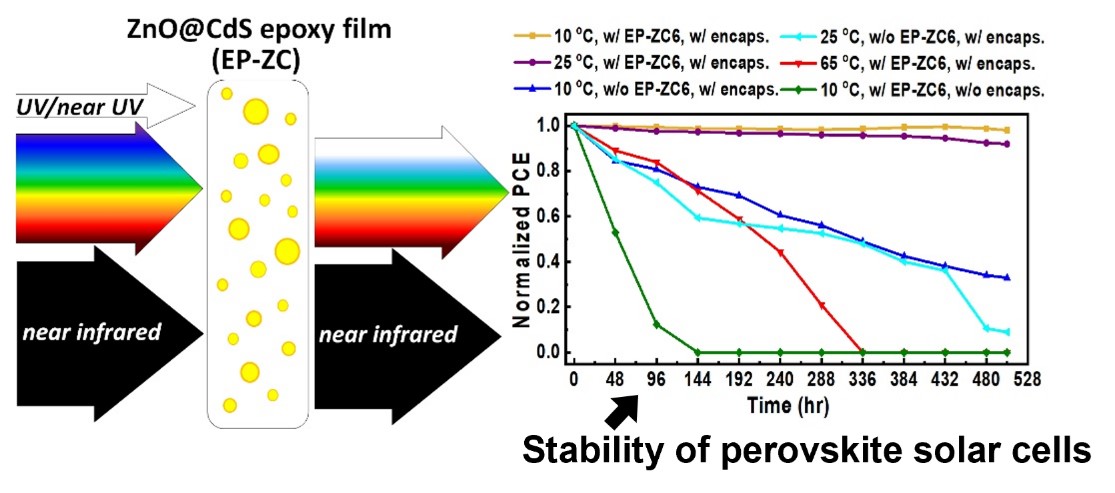

Mitigating the Degradation of MAPbI3 Perovskite Solar Cells Under Continuous Light Soaking with ZnO@CdS: Epoxy Short-Wavelength Sunlight-Shielded Films
Tulsiram Moodala Beed Prasannakumar in Prof. Chin-Ti Chen’s group
The stability of MAPbI3-based (MA stands for methylammonium) perovskite solar cells (PVSCs) has been carefully examined by ZnO@CdS nanoparticle-embedded epoxy films (EP-ZC films), device encapsulation (of glass sheet and UV-curing gel), and in different temperatures, 10 °C, room temperature (no temperature control), and 65 °C. EP-ZC films are used for shielding the short wavelength of the sunlight (UV, near UV, violet, and deep blue) which causes the photodegradation of MAPbI3 and hence the decline of power conversion efficiency (PCE) of PVSCs. Some external quantum efficiency spectra of the device are recorded alongside of the 500h continuous light-soaking measurement of current density (J) voltage (V) of the devices. The time-of-flight secondary-ion mass spectroscopy analysis is performed for a quantitative comparison of the iodide derived from the degra dation of MAPbI3 in the encapsulated devices with or without the light-shielding EP-ZC films at 10°C and 65°C, respectively. The EP-ZC6 film shows the best protection for encapsulated PVSCs with 98% of the initial PCE at 10 °C after 500 h continuous light soaking. Herein, from the continuous light-soaking results, one can prioritize the moisture, temperature, and light in the influence of the stability of PVSCs.
This work has been published in Solar RRL, 2400226, (2024)



